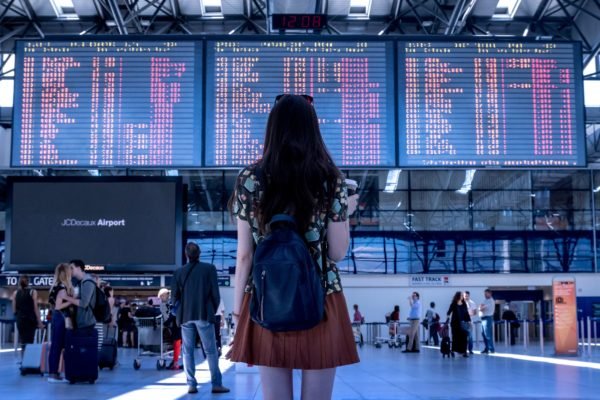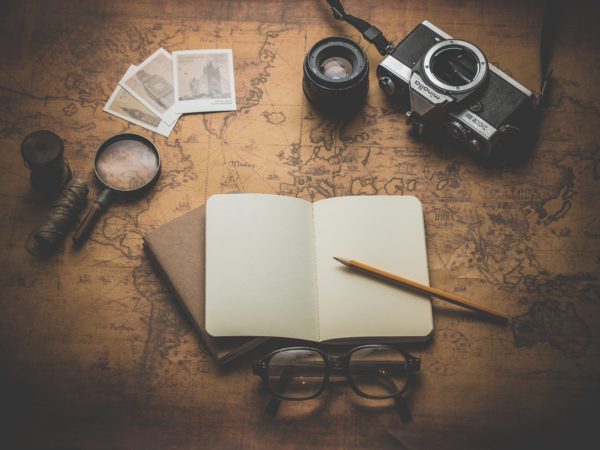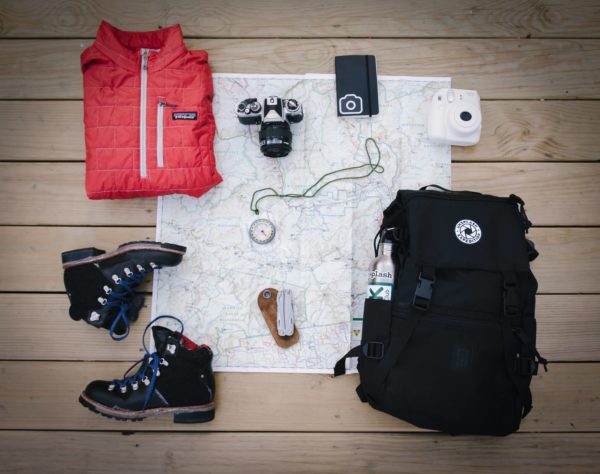
Solo traveling takes on many forms, from backpacking and hiking locally and internationally to simple road trips by car. It can be a wonderful and rewarding experience, but it can also be dangerous.
No matter where you intend to go or how you plan on getting there, preparedness should be at the forefront of every solo traveler’s mind.
Research and Planning

Before going somewhere, you must figure out where you’re going and how to get there. The most important thing to be aware of is your destination’s local laws and regulations, especially if you’re traveling to any locality where the laws are likely to differ from your home area. Knowing local laws is doubly important if you’re carrying weapons for personal protection, such as OC spray.
1. Travel Journal
Although you have unlimited access to vital travel information in the palm of your hand through your smartphone, having a notepad or a travel journal is useful to take notes and have a way to refer to them without relying on a battery-powered device.
Write down helpful information in an all-weather notepad, such as the location of hotels, health facilities, eateries, local customs, attractions, and anything you think essential regarding your destination.
2. Travel Adapters for Your Chargers
If you rely on your smartphone for trip planning and looking up information, make sure you keep your devices charged. Store all cables and chargers together in the brain (top lid) or zippered side pocket of your backpack. If your destination uses different power outlets, ensure you have travel adapters.
3. Power Bank
Having access to a power bank helps you keep your devices’ battery topped up if you’re going to be away from a power outlet for extended durations. Although there are many sizes and styles, choose a reputable model to ensure the best longevity and reliability.
4. Wallet with Card Organizer
Use a wallet with a card organizer to ensure your money and essential identification documents are always within reach. Include your passport, ID card, drivers’ license, concealed carrying permit, credit cards, all your frequent flyer and fidelity cards, and, of course, cash accepted in your home country and the destination country.
Many credit and bank cards use RFID chips for faster, more secure identification and payments. Unfortunately, criminals have developed devices that can read card information. Use an RFID protective sleeve around your cards inside your wallet or make one from aluminum foil and duct tape.
5. Local Maps
Depending on your intended destination, phone service coverage may not be guaranteed everywhere. Don’t rely on map applications for your smart devices, even if they’re fully offline, as using them still drains your battery. Instead, purchase paper maps of the local area. Modern paper maps are durable, waterproof, and weigh very little.
6. Paper Itinerary
Regardless of your destination, send a copy of your itinerary to friends, family members, or other loved ones. If you’re staying at a hotel, a motel, or some other lodging facility, write down their telephone numbers and additional contact information on the itinerary.
If anything happens to you, this itinerary may help them contact relevant authorities and aid them in locating you.
Packing Essentials

The mark of an excellent solo traveler is the ability to pack light with only the necessary items.
7. Survival Backpack
All your traveling gear should fit in a single, purpose-built survival backpack. Your travel bag should be made of high-quality materials and be comfortable to wear. It should also feature multiple pockets, sleeves, and other storage to keep your gear well-organized. And for anyone seeking a reliable bag to accompany them on their journeys, you can check out this post about nordace siena 1 vs 2 for more info!
8. Travel Clothing
Pack a minimum amount of clothing appropriate for the local customs and climate. Travel clothing should be made from quick-drying materials and also have moisture-wicking properties to keep you cool and dry on your journey.
9. Toiletry Kit
Your toiletry bag should be lightweight, but there should be everything you need for self-care. If you’re traveling by plane, make sure all your items are TSA-compliant. Your toiletry kit should include essentials like hand sanitizers, a toothbrush, toothpaste, a hairbrush, deodorant, shampoo, conditioner, lip balm, a travel mirror, a shaving kit with spare razors, and sunscreen.
10. First Aid Kit
A typical travel first-aid kit should contain bandages, gauze, burn ointment, painkillers, antiseptic wipes, fever relievers, cold and cough medicine, insect repellent, motion sickness pills, multi-vitamin tablets, nitrile gloves, duct tape, a thermometer, scissors, tweezers, and prescription meds. Don’t forget to bring some Mexican medicine for a cold.
11. Food and Water
If you are heading to the backcountry, take a personal water filter or purifying tablets to kill microorganisms in the water supply.
When you need to eat, prioritize buying and eating locally. Not only is it a great way to discover the local cuisine, but the food is also generally fresher and tastier, and it is an excellent way to support the local economy. You can typically tell the best places to eat because locals rather than tourists populate them.
Personal Protection
Women are at a higher risk compared to men when solo traveling. The 2020 Research and Design for Hotel Security Experience for Women Traveling Alone study revealed hotels and lodging facilities are where female travelers are the most likely to become violent crime victims. To ensure your safety, educate yourself with this crime rate travel report and take necessary precautions when choosing accommodations and traveling alone.
12. A Personal Safety Device
If you can bring personal safety devices to protect yourself, include them in your traveling kit. Some options are even legal to take with you on the plane, such as TSA-approved OC spray containers.
Although personal protection tools are good to have, consider enrolling in self-defense classes or learning practical martial arts lessons. Aikido or Jeet Kune Do are among the most useful for real confrontations. Start learning Martial arts rochester mn at a young age; this will help you train to be disciplined, practice self-defense, and focus on your goal. It has a lot of healthy benefits that you will surely enjoy.
Additional Considerations
If you’re staying at the same hotel or lodging facility for more than a few days, getting to know the local staff is worthwhile. They can provide you with tips and recommendations to make your trip safer or more enjoyable.
Consider buying an international phone plan if your destination is in another country.
No matter how long your trip lasts, also make sure you also have a plan for keeping your home safe while you’re away. According to the Bureau of Justice Statistics, about 72 percent of burglaries in the United States are committed while the house is empty.
The Takeaway
Traveling alone can be an incredible opportunity to open your mind to other cultures and new experiences. But it is crucial to remain safe and be prepared while on your journey. A few must-have items, from a first aid kit to a tactical flashlight, are all you need to give you peace of mind so you can enjoy your solo trip stress-free.
